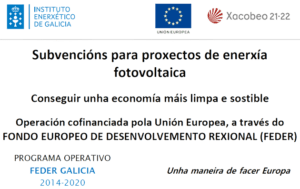Recently there is a whole range of concepts related to sustainability that are gradually being introduced into society. Concepts such as re-design, circular economy, carbon footprint, Cradle to Cradle (C2C), second life, useful life, sustainable design, eco-design… are being introduced into common language and are starting to be common in the end consumer, but in some cases we do not exactly know what each one means and how they affect the decision to purchase one of these products.
What is the circular economy?

The aim of the circular economy is that the value of products, materials and resources is kept inside the economic circle for as long as possible. This way, materials that in another context would be waste join the production chain turning them into revalued resources, this way helping to reduce waste.
The current production system is based on a linear system in which resources/raw materials are extracted, manufactured, are used and thrown away. This current way is exhausting resources and raw materials. The productive system that promotes the circular economy is based on optimisation and efficient use of both resources/raw materials, so that these are reincorporated into different phases of the process, becoming resources or raw materials again. A new usefulness for these resources is obtained this way.
The principles of the circular economy aim to preserve and improve the flows of resources and to design the products taking into account environmental impacts throughout the life cycle of that product. A key concept is extracting value from the resources.
The circular economy is a concept that goes beyond the production process and encompasses a new economic and social model with the aim of efficiently managing all the available resources.
What is Cradle to Cradle™ (C2C)?
Cradle to Cradle Certified™ is a voluntary certification issued by Cradle to Cradle Products Innovation Institute, a non-profit organisation. This certification is a multi-attribute certification that helps to carry out product analysis using a continual improvement process. An assessment is made from the design phase to the end of the useful life of the product. The control points are:
· Material Health
· Material Reutilisation
· Renewable energy and carbon management
· Water Stewardship
· Social Fairness

An external and independent body validates compliance of each of the control points.
A product receives an achievement level in each category: basic, bronze, silver, gold or platinum with the lowest achievement level representing the product’s overall mark.
Cradle to Cradle™ (C2C) applies an eco-efficient and eco-effective design-oriented philosophy. It helps to analyse the product to minimize the use of chemicals, reduce water and energy consumption, waste reduction (all waste is a potential raw material). It also facilitates fulfilment of universal human rights and the health of both people and the planet.
As an end user, what are the advantages of buying a product designed using circular economy and that has Cradle to Cradle™ certification?
A Cradle to Cradle™ certified product has been created from its design selecting healthy and safe materials, with the objective of minimizing or eliminating waste (revaluating and introducing the waste into the supply chain)
Buying a Cradle to Cradle™ (C2C) product means that it has been designed to be a healthy and safe product for people and the environment (from their production to their reuse)
To obtain this certification. External hazards for both human beings and environmental and chemical hazards are analyzed (such as for example: products with a carcinogenic effect, dermal toxicity, acute toxicity for fish…)
It is a certificate that controls both product and business characteristics, which from the start is a guarantee that the company is worried about complying with existing standards.
vertisol C2C Certified Products
vertisol is progressively incorporating the circular economy concept in its designs, and at present has 3 bronze Cradle to Cradle™ certified products, that cover different market needs. These are the fabrics:
Planet FR, Ecoplanet FR and Ecoplanet FR SRC are fabrics made with 100% threads that come from the recycling of PET polyester bottles and also recyclable products.
Their different degrees of opening and colour range allow covering a wide range of needs with regard to solar protection properties and thermal factors. All three products have flame retardant properties and can be cut easily with any of the systems on the market (cold cutting, Cush Cut, Ultrasound…). They are products that can be used for roller or vertical blinds, which allows great versatility.
As well as bronze Cradle to Cradle™ certification, the three fabrics are classified as GREENGUARD Gold®. This certification indicates that the product complies with indoor air quality standards with regard to Volatile Organic Compounds (VOCS) and that the product is acceptable for its use in environments such as schools and Medical Centres.
Ecoplanet FR and Ecoplanet FR SRC are light and functional Screen (PVC-free) fabrics. In the case of Ecoplanet FR SRC, one side has a “metallized” finish that helps to reflect the sun’s rays and optimize visual comfort.
Planet FR is a fabric with a 1% degree of opening that combines with the decorations of different environments. The structure of the Planet fabric has properties that contribute to the good sound absorption of a room. (alpha 0.60 according to ISO 10534 coefficient)
For more information on vertisol’s products contact mkt@vertisol.es or visit the website www.vertisol.com
Cradle to Cradle Certified™ is a voluntary certification issued by Cradle to Cradle Products Innovation Institute
Greenguard® is a voluntary certification issued by the Greenguard Environmental Institute (GEI).



